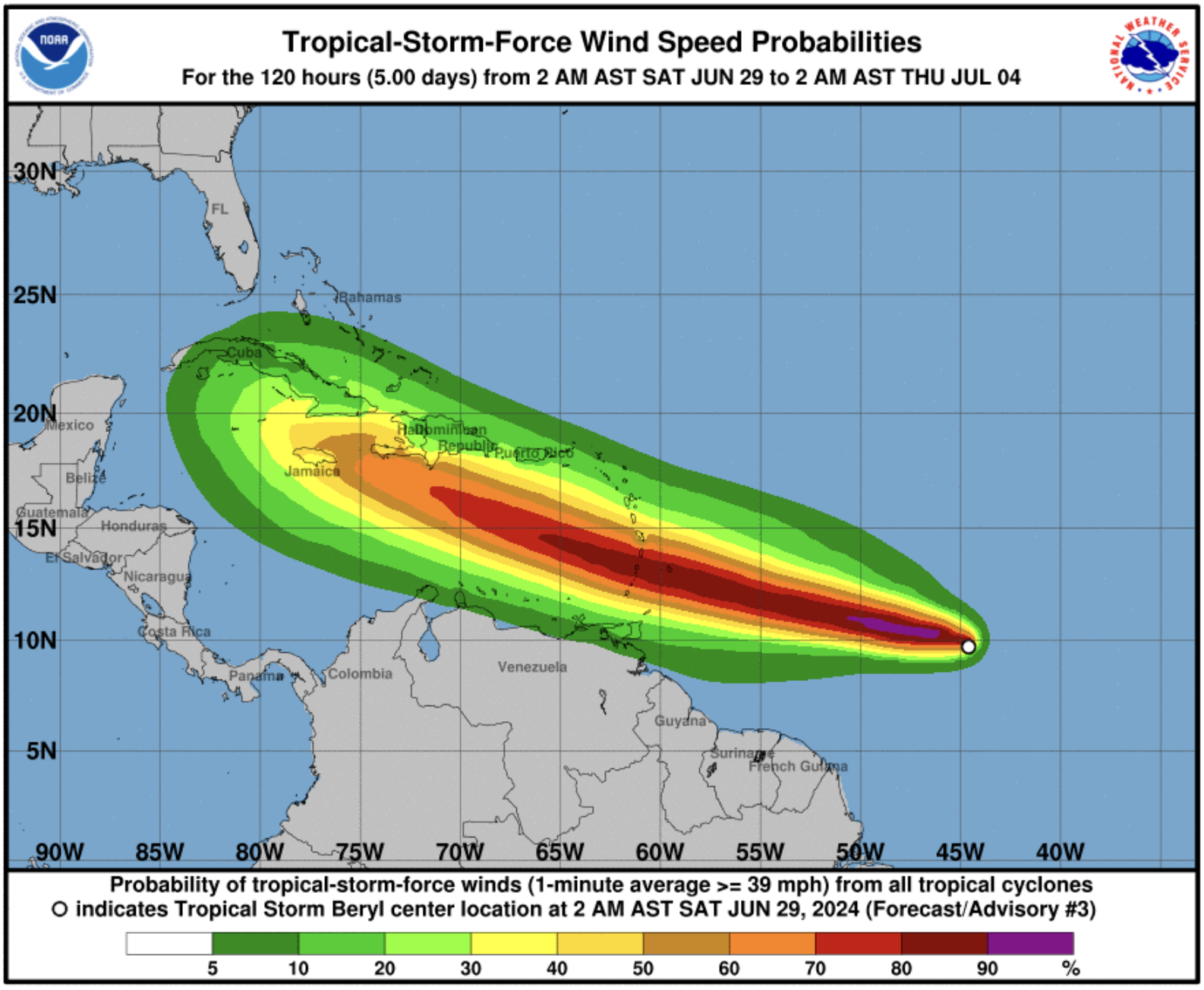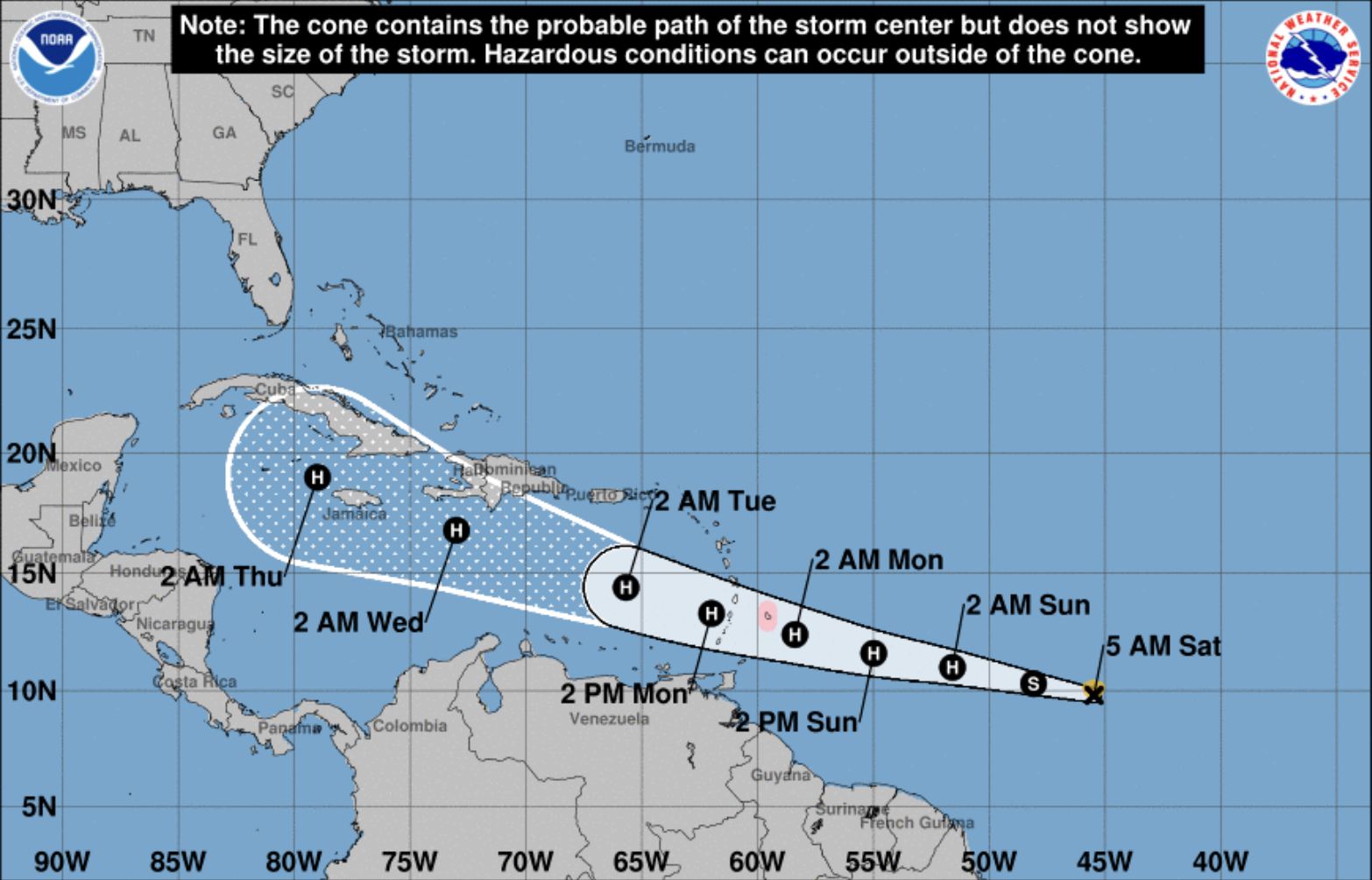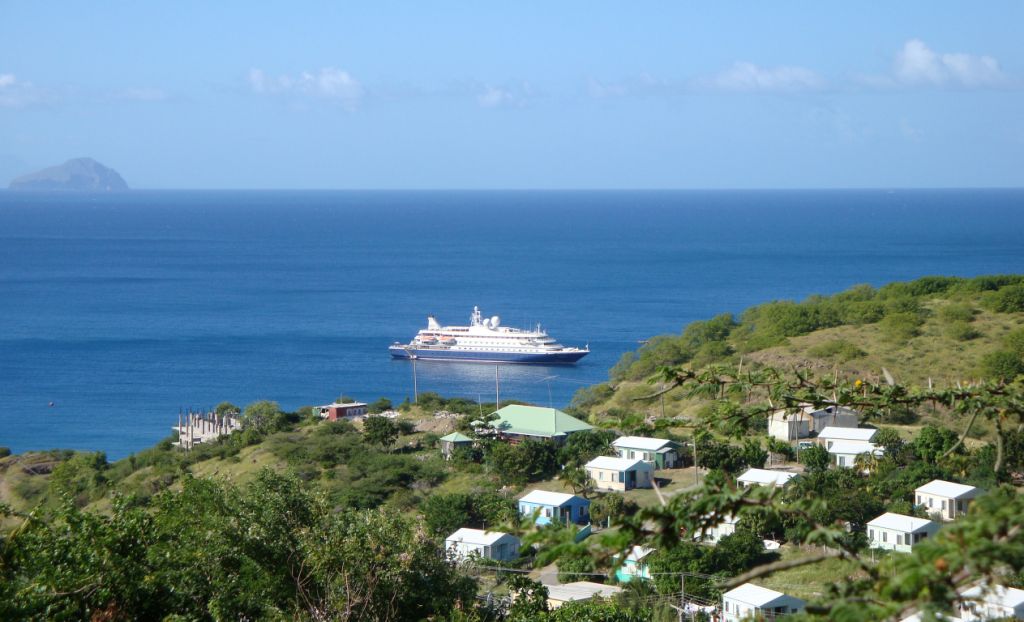29 June, 6am:
A tropical storm in the Atlantic Ocean that is heading west towards the Caribbean is forecast to become a hurricane by Sunday morning.
The cyclone, named Beryl, is barrelling towards the region at a speed of 21 miles per hour and is expected to reach Barbados, where a hurricane watch is in place, on Sunday evening.
The second named storm of the Atlantic hurricane season is likely to bring heavy rainfall, hurricane-force winds, and dangerous storm surges and waves.
According to the National Hurricane Center, in a public advisory earlier today, Beryl currently has maximum sustained winds of about 50mph with higher gusts.
The centre predicts that these winds, which extend outward up to 45 miles from the storm’s centre, will increase to about 110mph at its peak intensity.
The advisory, which was published at 5am on 29 June, said Beryl was 975 miles from Barbados.
Monitor progress
While a hurricane watch is only in place for Barbados, the centre advises other eastern, central and western Caribbean islands to closely monitor the storm’s progress.
A centre forecast said atmospheric and oceanic conditions over the western tropical Atlantic and the eastern Caribbean Sea are abnormally favourable for strengthening.
“The rapid intensification indices in the SHIPS model are showing a significant chance of rapid intensification,” it added.

Forecasters expect the storm to produce rainfall of three to six inches across Barbados and the Windward Islands with localised flooding in vulnerable areas.
They also predict that swells will reach the Windward and southern Leeward Islands by late Sunday.
These swells are likely to cause life-threatening surf and rip current conditions, the centre added.
Above average
In May, the National Oceanic and Atmospheric Administration (NOAA) predicted an above normal Atlantic hurricane season. This takes place from June 1 to November 30.
Experts forecast a range of 17 to 25 total named storms with winds of 39 miles per hour or higher. They expect eight to 13 to become hurricanes, with winds of 74 miles per hour or higher.
Of those, they have forecast four to seven to be major hurricanes, of category three, four or five, with winds of 111 miles per hour or higher.
Montserrat’s Disaster Management Coordination Agency (DMCA) director Alvin Ryan, in a Facebook video message on 1 June, urged residents to prepare.
“Action now can really help reduce the impacts of storms on our communities, reduce damage to property, and most importantly, save lives, which is the ultimate goal,” he said.
“Remember, it only takes one.”
Information on how to prepare for a hurricane is available in the DMCA’s 2024 Hurricane Preparedness Guide here.
Visit the National Hurricane Center for the latest weather updates at www.nhc.noaa.gov





